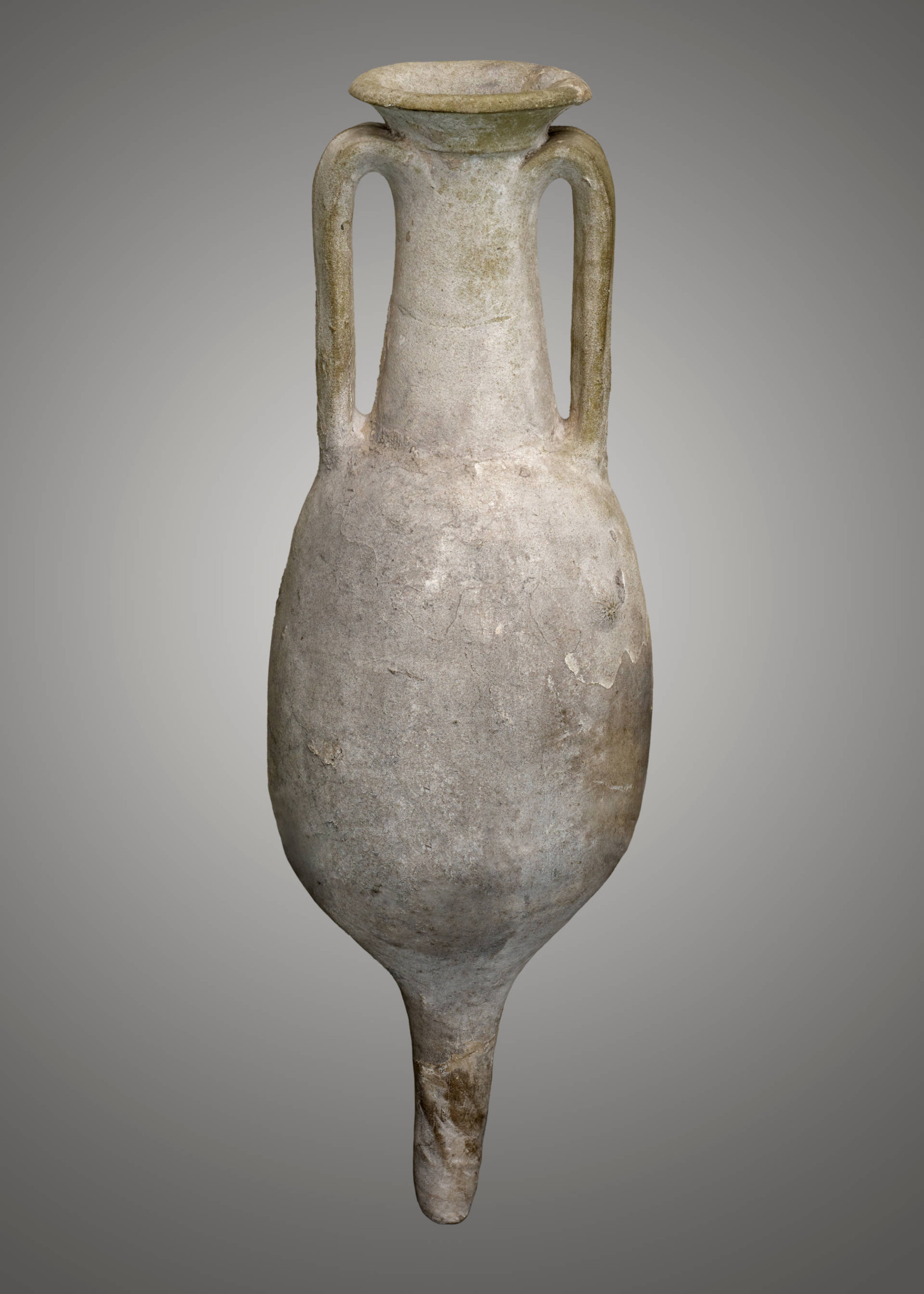
in 中文-普通话 / 国语 / Mandarin Chinese (simplified) translated by Zerui
This object has been translated into 8 different languages by 7 different users
这个距今有接近2000年历史的(古)罗马双耳瓶[Amphora]1,最初在西班牙的加迪斯[Cádiz]2被发现。它被博物馆带回,作为此类储存容器的典范展示。为了使这类容器在堆放使能牢固稳定地彼此相靠,双耳瓶的底部被设计呈尖状。联想到曼彻斯特发掘出的双耳瓶碎片,这是很有益的,因为我们会发现它们由粘土制成,无论是使用还是销毁都变得很容易。那么在今天,你的日常生活中,有哪些东西是用后即扔哪些是能重复使用的呢?
1. Amphora的名称来源于古希腊语amphiphoreus,amphi意为“在两边”,phoreus意为“携带”,非常形象地说明了它的特征和用处。尽管今天的名称源自希腊,但它最早在新时期时代(NeolithicPeriod, r. 10000 B.C.-2200 B.C.)已经出现于地中海东部。它在古希腊-罗马时代在货物储存和运输中至关重要(虽然有另一类表面加以精致手绘双耳瓶用于装饰和礼仪),比如当地盛产的橄榄油、葡萄酒、谷物甚至鱼都经它运输。
2. Cádiz:西班牙西南部滨海城市,靠近直布罗陀[Gibraltar]。它最早由腓尼基人[Phoenician]于公元前1104年左右建立,是当时重要的海港和贸易节点。
ReportDo you have something you’d like to say, in your own language or English, about the object or translation? We’d like to hear what you think.
Translations are community-sourced and for anyone to participate in, however you use your language. For more information, see Community Guidelines.
27 Jun, 2023
Notes on culture
In Rome, there is a port on the river Tiber called Emporio. This port has been used since ancient Roman times and it was particularly useful to receive goods and materials that arrived by sea from the port of Ostia and sailed up the Tiber.
Over the centuries the amphora shards, which were used to hold grain and liquid foodstuffs during transport, accumulated in a mound. This mound became so substantial in size to be awarded the name “Monte dei cocci” (“Mound of shards”).
Today, this mound is commonly known as Monte Testaccio. It is surprising for tourists and Romans to know that the famous Testaccio in fact an artificial hill formed by shards and various debris.
Nowadays, Testaccio is one of the most popular neighbourhoods in Rome. It is one of the cultural centres of the Eternal city but, throughout the centuries, it always managed to maintain its genuine and familiar spirit as Rome’s working-class district.